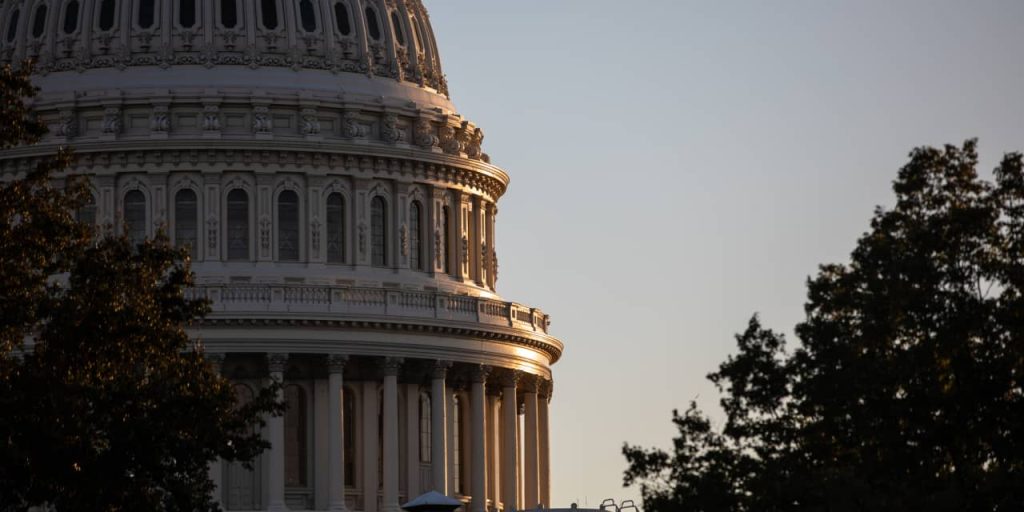It is a make-or-break week for Washington lawmakers, who are once again racing against the clock to find a way to fund the government before the sweeping federal workforce shuts down on Friday at midnight.
The situation is déjà vu for the House of Representatives, which only narrowly averted a shutdown six weeks ago when then-Speaker Kevin McCarthy, a California Republican, struck a last-minute, short-term deal with Democrats to keep the government funded for 45 days. House Republicans then fired McCarthy for working across the aisle on the stopgap measure, and spent the following 22 days electing a leader to succeed him.
Now, with the Nov. 17 deadline looming, a shutdown is once again on the horizon simply because lawmakers are running out of time. The House has passed only seven of the 12 appropriations bills needed to fund the government, and there is no clear path forward to forge agreement on the remaining five.
Just last week, Republicans pulled two appropriations bills from the floor because it didn’t have the votes to pass them. Anything passed through the House also has to be approved by the Democratic-led Senate and signed by President Joe Biden before it becomes law.
“Shutdown risk rising,” Chris Krueger, managing director of the Cowen Washington Research Group, wrote Thursday. “Not so much by design, but by accident—no real plan, and time in increasing short supply.”
A shutdown, if it comes, will force an estimated 800,000 federal workers to be furloughed while hundreds of thousands of others will be working without pay. The vast network of government subcontractors would also be out of work, and unlike their federal counterparts, they wouldn’t receive back pay.
Economists estimate those lost hours of work, and the resulting hit to consumer spending, would shave 0.2 percentage points off economic growth for each week it lasted, though growth would rebound by a commensurate amount once the government reopens.
The economic impact on its own isn’t huge, though it will come at a delicate time for the U.S. economy. The Federal Reserve is raising interest rates in an attempt to slow growth and cool inflation without forcing a recession, at the same time that geopolitical conflict overseas is pushing up uncertainty and causing volatility in the oil markets.
Bank of America
economists on Friday wrote they expect the U.S. economy to experience a soft landing—an ideal outcome where inflation slows but there is no contraction—though they are worried about a number of headwinds, including a potential shutdown.
Perhaps most significantly, a shutdown could highlight the U.S.’s persistent issues with governance, which could negatively impact its credit rating. On Friday,
Moody’s
Investors Service, the only major ratings agency to continue to hold U.S. debt at an Aaa rating, said it was changing the outlook on the U.S.’s rating from “stable” to “negative,” in part because of continued political polarization in Congress.
Congress’ best—and perhaps only—shot at avoiding a shutdown Friday will be through passing what is known as a continuing resolution, or CR, the same way it did Sept. 30. That stopgap measure would hold funding steady at current levels for a set period, likely until late December or mid-January, giving lawmakers more leeway to come together on a more formal agreement.
Conservative Republicans have been against the idea of passing another CR, preferring instead to pass all 12 appropriations bills individually. But political analysts mostly expect GOP lawmakers to give new House Speaker Mike Johnson, a Louisiana Republican, at least some leeway to get through his first funding fight given how recently he took up his position—though that could be about to run out.
“A new Speaker should have political capital to win one clean, temporary extension of current funding, and the new Speaker does not believe that a government shutdown is a political winner,” the Strategas policy team led by Dan Clifton wrote. Even so, the team added, “there is wide disagreement among Republicans over the best path forward.”
House lawmakers left Washington on Thursday and will return Tuesday for a potential vote on keeping the government open, but it is unclear as of now what that package will look like.
For Johnson, the focus has been on making a good-faith effort to forge any sort of compromise that could appease members of his party from both the moderate side and on the far right as a way to generate goodwill—even if the ultimate outcome is a straightforward CR.
His attempts to find an alternative path forward could prolong negotiations, but many analysts still expect lawmakers will approve a stopgap measure before Friday’s deadline.
“We’ll get some noise between now and then,” Stephen Myrow, managing partner of Beacon Policy Advisors, told Barron’s. But the firm’s base case, Myrow added, is no shutdown—at least for now.
“The real pressure,” Myrow says, is going to be on the next funding deadline, when House Republicans will start pushing for significant funding cuts in exchange for their votes to keep the government open.
So if it isn’t a shutdown this week—it might just be a shutdown early next year, instead.
Write to Megan Cassella at [email protected]
Read the full article here















